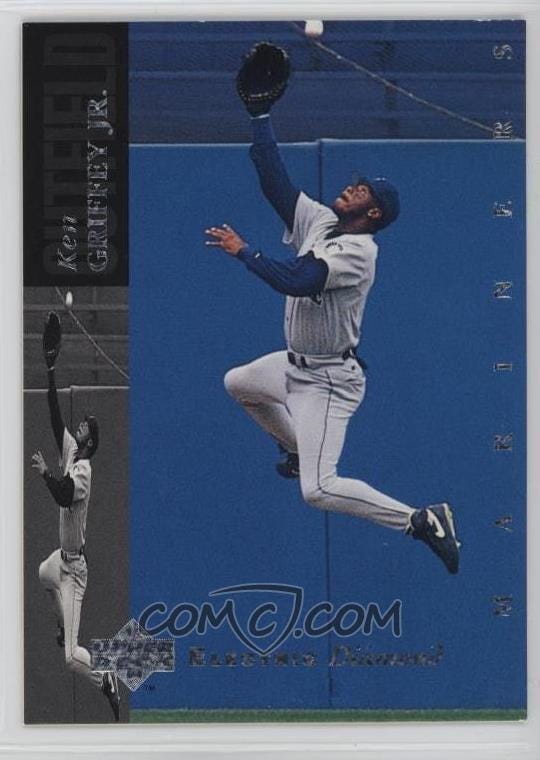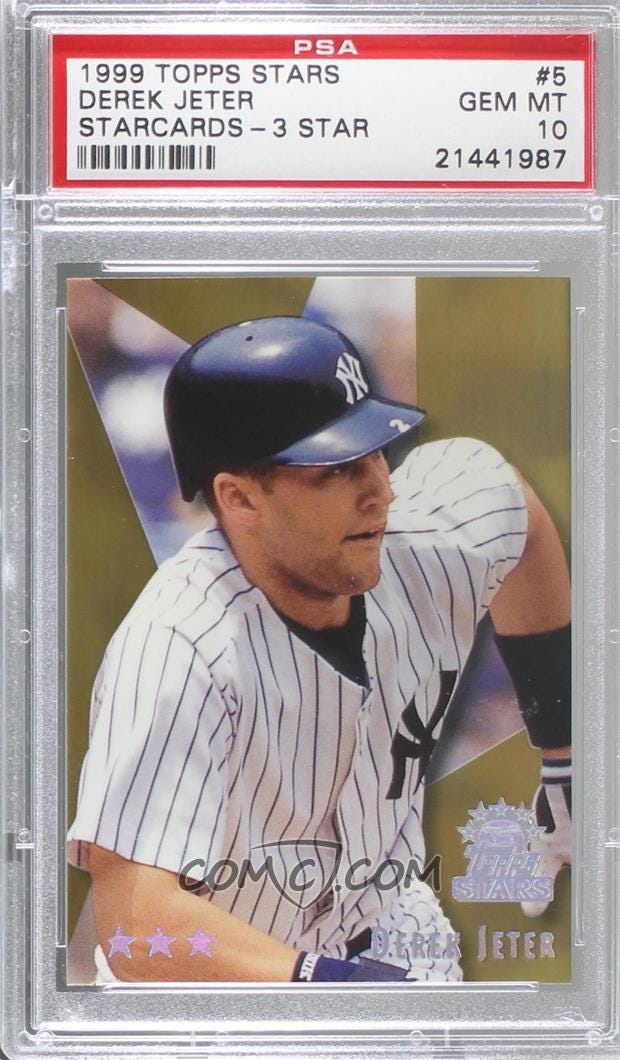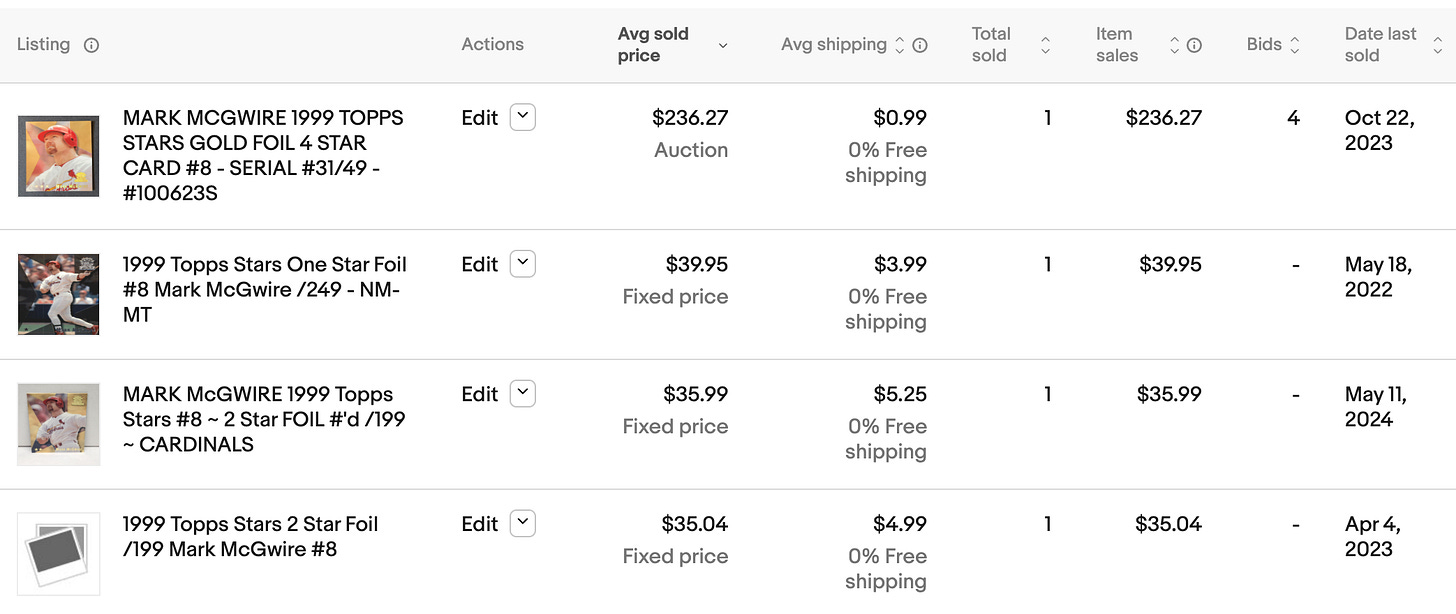One Tiny Difference Could Have a BIG Value Impact—5 Card Parallels to Know & Flip
Any time there are these different levels of parallels, you’re bound to see some good cards slip through the cracks. The more confusion and weirdness, the better from a card flipper’s point of view.
Affiliate Disclosure: This post contains affiliate links. As I am a part of the eBay Partner Network and other programs, if you follow these links and make a purchase, I’ll receive commission (at no cost to you). I appreciate your support!
Disclosure: This is not buying or investment advice. I’m simply reporting the data I’m seeing. Please do your own research and make your own decisions. Just because cards have increased in value up to this point, it doesn’t mean they will continue to do so.
I remember how bummed out I was when cards like Upper Deck’s “electric diamond” or “Topps gold” didn’t really equate to value in most instances. Especially this one:
They looked awesome, but this was before I really grasped that values comes from scarceness.
It was also before I knew that anything that came at least one-per-pack was far too common to hold a ton of value.
As you’ll see below, parallels of the parallels is where it’s at. Just like a refractor is cool, but a gold refractor is better, these cards below have different levels…base, parallel, better parallel, and so on.
And key point here, while I’ll be talking about baseball cards for most of this article, many of these sets are found across football, basketball, and hockey.
Anyway, any time there are these different levels of parallels, you’re bound to see some good cards slip through the cracks. The more confusion and weirdness, the better from a card flipper’s point of view.
Plus, some of these set breakdowns are just plain cool in my opinion…definitely a lot more creativity back in the day that goes above and beyond just coming up with different colors and patters for refractors, like today’s hobby.
1. 1999 Topps Stars 4 Stars Foil
One cool and valuable example were those 2004 Upper Deck Power-Ups from the last article; another is Pinnacle Epix which we talked about a while ago.
1999 Topps Stars follows suit, with one-star, two-star, three-star, and four-star parallels.
What’s unique, though, is that every card doesn’t have every parallel; meaning only a select few will have four-star parallels. This is the breakdown:
One Star (cards #1-100)
Two Star (cards #1-50)
Three Star (cards #1-20)
Four Star (cards #1-10)
To explain, there are 150 cards on the base checklist, and only cards #1-#10 will have every parallel:
Ken Griffey, Jr.
Chipper Jones
Mike Piazza
Nomar Garciaparra
Derek Jeter
Frank Thomas
Ben Grieve
Mark McGwire
Sammy Sosa
Alex Rodriguez
(Goes to show how highly-thought of Ben Grieve was!)
On the flip side, only cards #1-50 will even have two-star parallels, and so on.
What’s also cool is that each parallel features a more zoomed-in shot of the base card. See full shot Jeter, followed by at-the-knees Jeter, and then waist-up, and headshot:
Now, we aren’t done yet.
There are the normal star parallels and there are foil versions of those cards as well. This means there are both four-star and four-star foil parallels.
The foils are numbered:
1-Star Foil Parallel /249
2-Star Foil Parallel /199
3-Star Foil Parallel /99
4-Star Foil Parallel /49
Here is the breakdown of values for someone like Mark McGwire:
Anyway, with the different stars, serial numbering, no serial numbering, there is a lot to know, and now you do! Again, shout out to BaseballCardPedia.com for always having the info and details.







